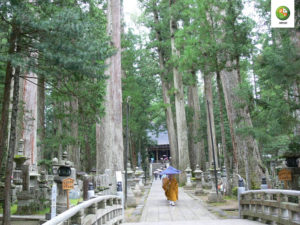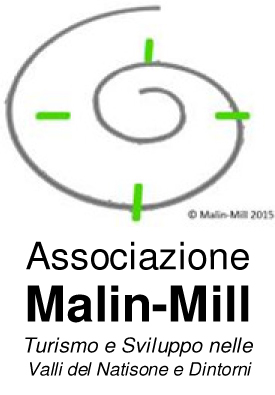Terapia Forestale in Giappone e in Italia: trova le differenze

Foto per gentile concessione di: International Society of Nature and Forest Medicine).
In Giappone, la Terapia Forestale è stata definita come: “un approccio basato su evidenze scientifiche volto a supportare la guarigione individuale attraverso l”immersione’ in foresta” , secondo la Forest Therapy Society che ha ideato ed ingegnerizzato questo approccio (FTS, 2021) e che costituisce l’organizzazione leader a livello internazionale in questo ambito di ricerca.
In Italia, la Terapia Forestale è stata definita come un “escursione guidata” (Nardini, 2020) che comprende “la mindfullness e l’artigianato artistico” (Meneguzzo, Zabini, 2021, p. 36), ovvero come un “escursione forestale con un programma strutturato” (Bassi et al, 2022, p. 4).
La comunità scientifica in Italia non segue quindi la definizione e l’approccio originali (Droli et al, 2023). Abbondano gli studi non autorizzati dai CEUR, con gravi rischi a carico di pazienti e degli organizzatori degli studi non autorizzati.
La Stazione di Terapia Forestale Friuli Venezia Giulia applica la definizione di Terapia Foresta sviluppata dalla FTS, originale, semplice ma rigorosa, dal 2016. Inoltre adotta procedure di ricerca conformi alle norme in materia, ossia legali.
In questo video, il professor Qing Li, il principale pioniere della ricerca medica in quest’ambito, presenta un nuovo testo sulle basi scientifiche dell’approccio e sul “forest bathing” (“bagni di foresta”) come nuova pratica per la salute umana.
Gli studi che individuano i benefici per la salute umana ottenuti attraverso la fruizione delle foreste boreali, temperate e subtropicali in Giappone e Corea del Sud sono numerosi e includono i seguenti.
- Physiological effect of olfactory stimulation by hinoki cypress (Chamaecyparis obtusa) leaf oil, 2015. H. Ikei, C. Song and Y. Miyazaki. Journal of Physiological Anthropology, 34(44).
- Physiological and psychological effects of a forest therapy program on middle-aged females, 2015. H. Ochiai, H. Ikei, C. Song, M. Kobayashi, T. Miura, T. Kagawa, Q. Li, S. Kumeda, M. Imai and Y. Miyazaki.International Journal of Environmental Research and Public Health 12(12): 15222-15232.
- Physiological and psychological effects of a walk in urban parks in fall, 2015. C. Song, H. Ikei, M. Igarashi, M. Takagaki and Y. Miyazaki. International Journal of Environmental Research and Public Health 12(11): 14216-14228.
- Analysis of individual variations in autonomic responses to urban and forest environments, 2015. H. Kobayashi, C. Song, H. Ikei, T. Kagawa and Y. Miyazaki. Evidence-Based Complementary and Alternative Medicine 2015-671094.
- Distribution characteristics of salivary cortisol measurement in a healthy young male population, 2015. H. Kobayashi and Y. Miyazaki. Journal of Physiological Anthropology, 34(30).
- Comparison of the effects of olfactory stimulation by air-dried and high temperature-dried wood chips of hinoki cypress (Chamaecyparis obtusa) on prefrontal cortex activity, 2015. H. Ikei, J. Lee, C. Song and Y. Miyazaki.Journal of Wood Science 61: 537-540.
- Interaction with indoor plants may reduce psychological and physiological stress by suppressing autonomic nervous system activity in young adults: a randomized crossover study, 2015. M. S. Lee, J. Lee, B. J. Park and Y. Miyazaki. Journal of Physiological Anthropology, 34(21).
- Physiological and psychological effects of forest therapy on middle-aged males with high-normal blood pressure, 2015. H. Ochiai, H. Ikei, C. Song, M. Kobayashi, A. Takamatsu, T. Miura, T. Kagawa, Q. Li, S. Kumeda, M. Imai and Y. Miyazaki. nternational Journal of Environmental Research and Public Health 12(3): 2532-2542.
- Effect of forest walking on autonomic nervous system activity in middle-aged hypertensive individuals: a pilot study, 2015. C. Song, H. Ikei, M. Kobayashi, T. Miura, M. Taue, T. Kagawa, Q. Li, S. Kumeda, M. Imai and Y. Miyazaki. International Journal of Environmental Research and Public Health 12(3).
- Acute effects of exposure to traditional rural environment on urban dwellers: a crossover field study in terraced farmland , 2015. J. Lee, B. J. Park, T. Ohira, T. Kagawa and Y. Miyazaki. International Journal of Environmental Research and Public Health 12(2): 1874-1893.
- Physiological and psychological effects of walking around and viewing a lake in a forest environment, 2015. C. Song, J. Lee, H. Ikei, T. Kagawa, Y. Miyazaki and B.J. Park. Journal of Korean Forestry Society 104(1): 140-149.
- Effect of stimulation by foliage plant display images on prefrontal cortex activity: A comparison with stimulation using actual foliage plants, 2015. M. Igarashi, C. Song, H. Ikei and Y. Miyazaki. Journal of Neuroimaging 25: 127-130.
- Physiological and psychological effects of olfactory stimulation with D-limonene, 2014. D. Joung, C. Song (co-first author), H. Ikei, T. Okuda, M. Igarashi, H. Koizumi, B. J. Park, T. Yamaguchi, M. Takagaki and Y. Miyazaki. Advances in Horticultural Science 28(2): 90-94.
- Physiological effects of orange essential oil inhalation in humans, 2014. B.J. Park, K. Ono, Y. Yoshinami and Y. Miyazaki.Advances in Horticultural Science 28(4): 225-230.
- Effects of olfactory stimulation with rose and orange oil on prefrontal cortex activity, 2014. M. Igarashi, H. Ikei, C. Song and Y. Miyazaki. Complementary Therapies in Medicine 22(6): 1027-1031.
- Effects of stimulation by three-dimensional natural images on prefrontal cortex and autonomic nerve activity: a comparison with stimulation using two-dimensional images, 2014. M. Igarashi, T. Yamamoto, J. Lee, C. Song, H. Ikei and Y. Miyazaki. Cognitive Processing 15(4): 551-556.
- Emotional, restorative and vitalizing effects of forest and urban environments at four sites in Japan, 2014. N. Takayama, K. Korpela, J. Lee, T. Morikawa, Y. Tsunetsugu, B. J. Park, Q. Li, L. Tyrväinen, Y. Miyazaki and T. Kagawa. International Journal of Environmental Research and Public Health 11(7): 7207-7230
- Effect of olfactory stimulation by fresh rose flowers on autonomic nervous activity, 2014. Igarashi, C. Song (co-first author), H. Ikei, T. Ohira and Y. Miyazaki. Journal of Alternative and Complementary Medicine 20(9): 727-731
- Effects of olfactory stimulation with perilla essential oil on prefrontal cortex activity (2014). M. Igarashi, C. Song, H. Ikei and Y. Miyazaki.Journal of Alternative and Complementary Medicine 20(7): 545-549.
- Physiological and psychological responses of young males during spring-time walks in urban parks, 2014. C. Song, H. Ikei, M. Igarashi, M. Miwa, M. Takagaki and Y. Miyazaki. Journal of Physiological Anhropology, 33(8).
- The physiological and psychological relaxing effects of viewing rose flowers in office workers, 2014. H. Ikei, M. Komatsu, C. Song, E. Himoro and Y. Miyazaki. Journal of Physiological Anthropology, 33(6).
- Influence of forest therapy on cardiovascular relaxation in young adults, 2014. J. Lee, Y. Tsunetsugu, N. Takayama, B.J. Park, Q. Li, C. Song, M. Komatsu, H. Ikei, L. Tyrväinen, T. Kagawa and Y. Miyazaki. Evidence-Based Complementary and Alternative Medicine 2013-834360.
- Effect of thermal environment of forest and grass area on human physiological response-focused on the university students at Keumkang Arboretum, 2013. D. Joung, Y.H. Choi, C.W. Kwoun, D. Yoem, G.W. Kim, K.N. Kang, Y.T. Kim, D.H. Ji, Y. Miyazaki and B.J. Park. Korean Institute of Forest Recreation 17(4): 143-148.
- Physiological and psychological impacts of walking stress in an urban environment on young males, 2013. C. Song, H. Ikei, Y. Tsunetsugu, J. Lee, T. Kagawa and Y. Miyazaki. Journal of Geography & Natural Disasters 3(2).
- Physiological and psychological effects of walking on young males in urban parks in winter, 2013. C. Song, D. Joung, H. Ikei, M. Igarashi, M. Aga, B.J. Park, M. Miwa, M. Takagaki and Y.Miyazaki. Journal of Physiological Anthropology, 32(18).
- A review on bioactivities of perilla: progresses in research on the functions of perilla as medicine and food, 2013. M. Igarashi and Y. Miyazaki. Evidence-Based Complementary and Alternative Medicine 925342.
- Individual differences in the physiological effects of forest therapy based on Type A and Type B behavior patterns, 2013. C. Song, H. Ikei, J. Lee, B.J. Park, T. Kagawa and Y. Miyazaki. Journal of Physiological Anthropology, 32(14).
- Optimum walk speed for health promotion in forest road -target heart rate control to use walk speed, 2013. Y.H. Choi, H.J. Lim, G.W. Kim, D.W. Joung, J.D. Lee, Y. Miyazaki and B.J. Park.Korean Institute of Forest Recreation 17(1): 27-32.
- Physiological and psychological effects of viewing urban forest landscapes assessed by multiple measurements, 2013. Y. Tsunetsugu, J. Lee, B.J. Park, L. Tyrväinen, T. Kagawa and Y. Miyazaki. Landscape and Urban Planning 113: 90-93.
- The effect of garden designs on mood and heart output in older adults residing in an assisted living facility, 2013. S. Goto, B.J. Park, K. Herrup and Y. Miyazaki (2013). Health Environments Research & Design Journal 6(2): 27-42.
